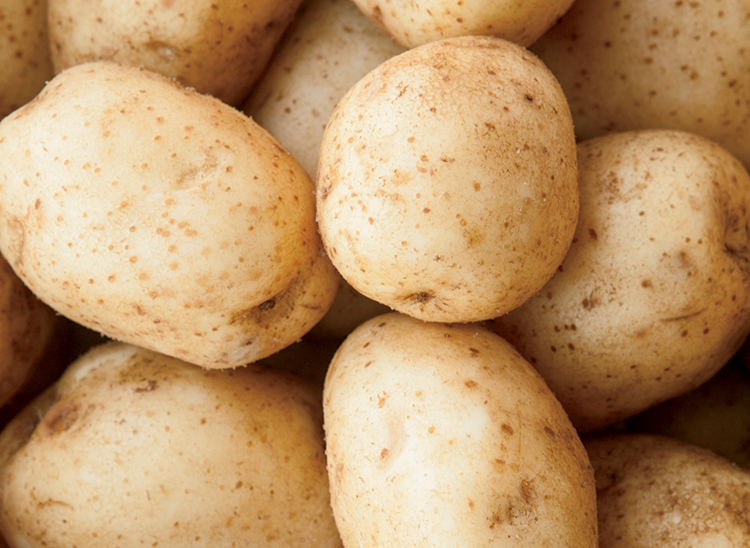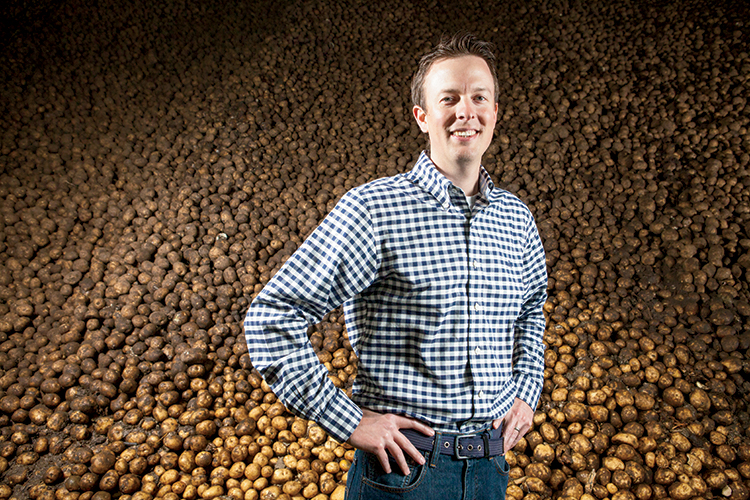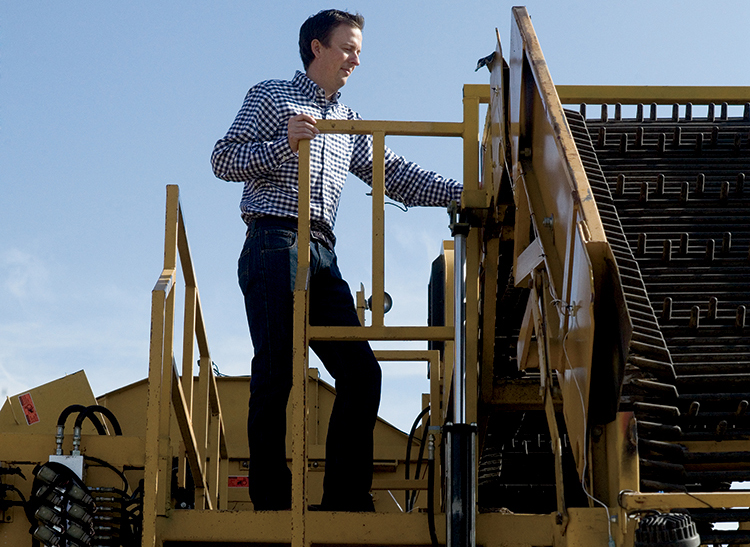Home > Nebraska > Nebraska Crops & Livestock > No Small Potatoes
No Small Potatoes

Potatoes are one of the most embraced comfort foods in America, whether they’re mashed, fried, baked or made into chips. But those satisfying side dishes and tasty snacks wouldn’t be possible without the hard work of Nebraska farmers who plant, grow, harvest and process the potatoes before they ever arrive at stores and restaurants.
Nebraska ranks 10th in the nation for potato production, producing a whopping 841 million pounds of potatoes in 2013 on approximately 18,500 acres. That same year, the value of Nebraska potatoes sold generated more than $108.5 million.
About one-third of Nebraska’s potatoes are processed into potato chips. The rest are grown for table stock and for the seed and processing markets, including potato salad and French fries.
“Nebraska potatoes feed into the usual pipelines of table stock, chips, fries, dehydrated and seed, or potatoes replanted for the purpose of producing more potatoes,” says Steven Marquardt, manager of the Potato Development Division for the Nebraska Department of Agriculture. “Potato production has become a highly specialized industry and is very labor- and capital-intensive.”

Growing Potatoes
The growing season for potatoes is about 120 days. Farmers plant them in late April or early May and harvest them in September and October.
“Potatoes need irrigation and sandy soils, and some areas of Nebraska provide both,” says Steve Gangwish, vice president of CSS Farms, a company that raises potatoes for Frito Lay and has farms in Kearney, Columbus, Cody and North Platte. “Sandy soil is needed because when you harvest the potatoes, the dirt and sand falls away. Otherwise, it would be difficult to separate the potatoes from the dirt.”
Once harvested, CSS Farms sends the bulk of its potatoes to a Frito Lay plant in Topeka, Kan., to be made into chips. CSS also grows potatoes for seed at an isolated farm in north-central Nebraska.

Potato Production
While CSS primarily grows potatoes for chips (and was awarded Frito Lay’s National Supplier of the Year in 1997 and 2013), they also produce table stock potatoes in other states that are marketed to grocery stores nationwide.
“After harvest, they are washed, graded and packed into retail bags, and sent to grocery stores or storage,” Gangwish says. “We have storage facilities at all our farms that are temperature and humidity controlled.”
Marquardt says potato farmers need to have an extensive marketing plan because potatoes are stored on the farm and marketed directly by the farmer to processors and retail businesses.
“Most of the time, farmers have to find the buyer before planting, store it in winter at closely regulated temperature and humidity, and arrange for trucking long distances,” he says. “Their goal is to ensure the perishable product arrives in the same high quality that it was in when it left the farm.”




